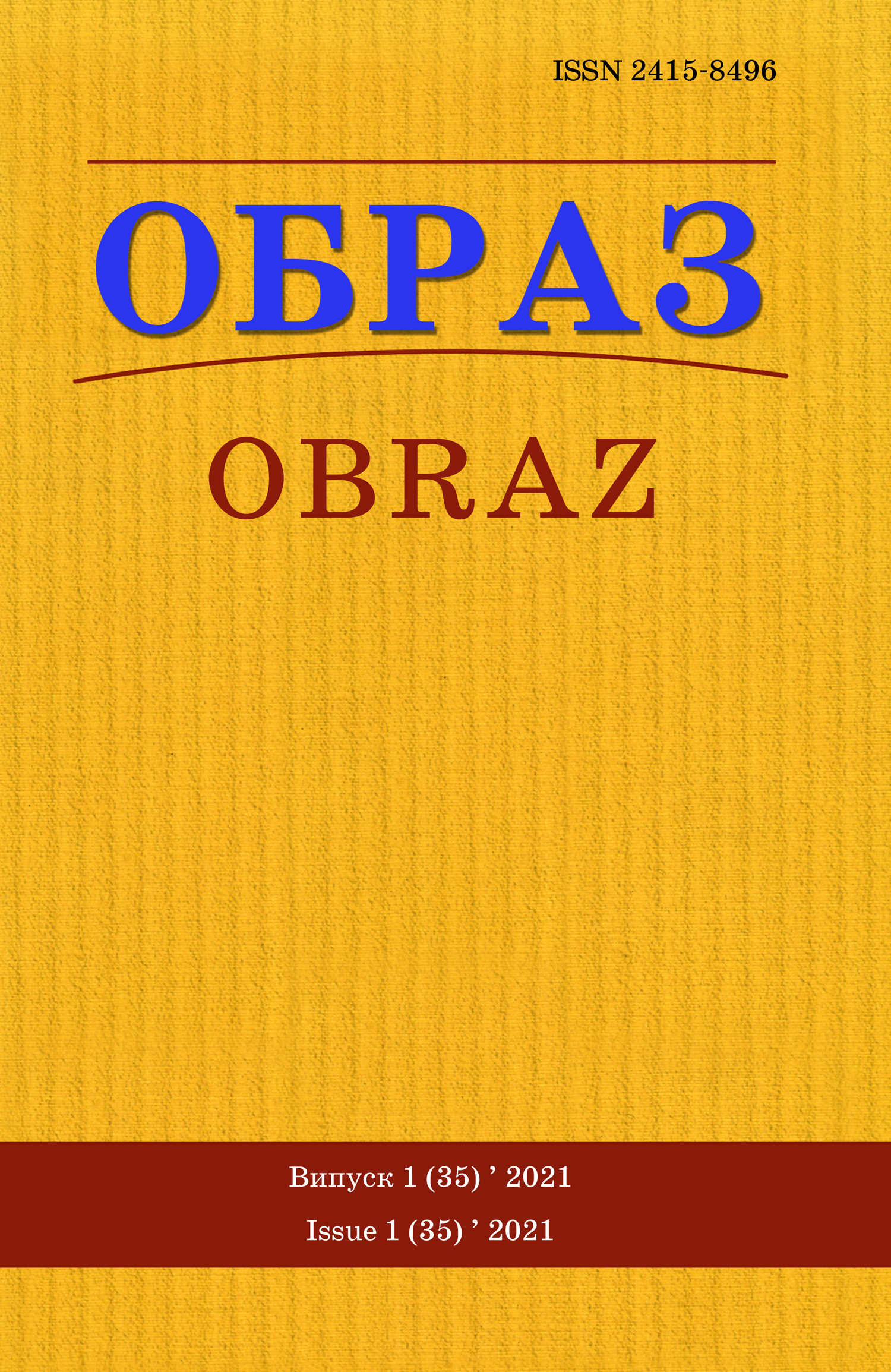Abstract
Introduction. One of the main trends in the development of modern media space is the strengthening of the visual component. Visualization, which has become a trend in the entire media sphere, has not escaped the radio. This is particularly true of the new broadcasting format as videostream. This technological way of presenting information allowed to look behind the scenes of the radio, to make it more modern, attractive to the recipient. The latest technological processes, including radio streaming, need to be understood. This is the relevance of our study. The aim is to study the development trends, varieties and features of stream broadcasts on Ukrainian radio stations. Methodology. It is based on a systematic approach, which allowed identifying trends related to the peculiarities of the development of video streaming broadcasts by Ukrainian radio stations. At different stages of the research it is used such methods as analysis of scientific literature, typological analysis, methods of observation, systematization of data. Results. The analysis of video streaming technologies used by Ukrainian radio stations allowed us to outline certain trends in this area. Today videostreams program content have not yet received a substantial distribution to radio stations. Using different types of videostreams, the choice of technology depends on the formats of radio stations, as well as the needs of the media and their financial capabilities. One of the most notable trends is that broadcast non-commercial radio stations use mostly selective broadcasts, while commercial music information stations use non-stop broadcasts. Radio stations place video streaming broadcasts of programs both on their own sites and on third-party network resources. And here, too, trace an interesting trend: their own sites for this purpose usually use commercial radio music and entertainment oriented, social networking - non-profit information and analysis station. Among social networks, YouTube video hosting is the most popular for video streaming, and Facebook is the least popular. Videostreams of software content also differ in technical characteristics. Mostly radio stations use the simplest version of broadcasts, which is to use a single webcam. Recently, however, there are more and more radio stations that pay attention to the video dynamism, so they use two or three cameras to streamvideo. The most complex technological process is observed on non-commercial radio stations. The broadcasts of their radio programs increasingly resemble television programs in terms of technological characteristics. Conclusions. The disturbed problem is the first step in the studying of the visual content of Ukrainian radio stations, using of convergent technologies by them. Promising study finds out the audience needs of videostream radio broadcasts.
References
1. Babak, V.A. (2018), «Features of video streaming during radio broadcast on» UA: Ukrainian Radio «, in Galych A.O. (Ed.), Mass media of Ukraine at the turn of epochs: realities and prospects of development, Luhansk National University.by Taras Shevchenko, Starobilsk, рр. 126–132.
2. Vashhenko, A. (2020), «Features of using streams by Ukrainian TV channels», in Tkachenko O., Zhylenko I. (Eds.), XVI National Scientific Conference «Journalism Education in Ukraine: the world professional standards», Sumy State University, Sumy, рр. 23–25.
3. Gyrina, T.S. (2018), «Transformation and convergence in the activities of Ukrainian editions of international radio stations», Visnyk XDAK [Visnyk XDAK], vol. 53, рр. 158–168.
4. Glazkova, S.A. (2019), «Streaming video blogs: the specifics of the format of mass communication in the Web 2.0 environment», available at: https://pureportal.spbu.ru/ files/49646235/_2019_.pdf#page=233.
5. Kikerchuk, R. (2019), 5. «Genre and style features of the stream message», Tele- ta radiozhurnalistyka [TV and radio journalism], vol. 18, рр. 263–269.
6. Kruglova, L.A. (2010), Hybrid media: the role of video in new media, available at: https://cyberleninka.ru/article/n/gibridnye-media-rol-video-v-novyh-media.
7. Lytvynenko, Y.V. (2015), «Live video broadcasts from radio studios: specifics and typology», available at: https://cyberleninka.ru/article/n/pryamye-videotranslyatsii-iz-studiyradiostantsiy-spetsifika-i-tipologiya.
8. Lyubchenko, Yu.V. (2015), «Visualization of information of modern radio «, Derzhava ta regiony. Seriya: Socialni komunikaciyi [State and regions. Series: Social Communications], vol. 3 (23), рр. 54–57.
9. Myroshnyk, M.A. (2017), 9. «Stream as a hybrid genre in the process of commenting of computer games», available at: http://www.tsutmb.ru/nauka/internet-konferencii/2017/ zhurnalist-v-sovr-media/3/miroshnik.pdf.
10. Myroshnyk, M.A. (2019), «Stream as a modern format of live reporting: the audience factor and features of development», available at: http://www.vestnik.vsu.ru/pdf/ phylolog/2020/01/2020-01-29.pdf.
11. Nagornyak, M. (2015), «Video component of broadcast programs on Ukrainian network radio stations: realities and prospects», Tele- ta radiozhurnalistyka [TV and radio journalism], vol. 14, рр. 214–220.
12. Polisuchenko, A.Yu. (2018), «Video streams on Internet sites and social networks as a kind of live television broadcasting», in Shevchenko, V.E. (Ed.), Crossmedia: content, technologies, prospects, «Kyyivskyj universytet», Kyiv, pp. 111–124.
13. Selyutyn, A.A. (2018), «Videostream in the aspect of game journalism», available at: http://jour.vsu.ru/editions/thesis/05_18_part2.pdf#page=143.
14. Simashova, A. (2013), «Radiovision» as a unique model of convergence of WMC (on the example of the Italian radio vision «RTL 102.5»)», Tele- ta radiozhurnalistyka [TV and radio journalism], vol. 12, рр. 378–385.

This work is licensed under a Creative Commons Attribution 4.0 International License.

